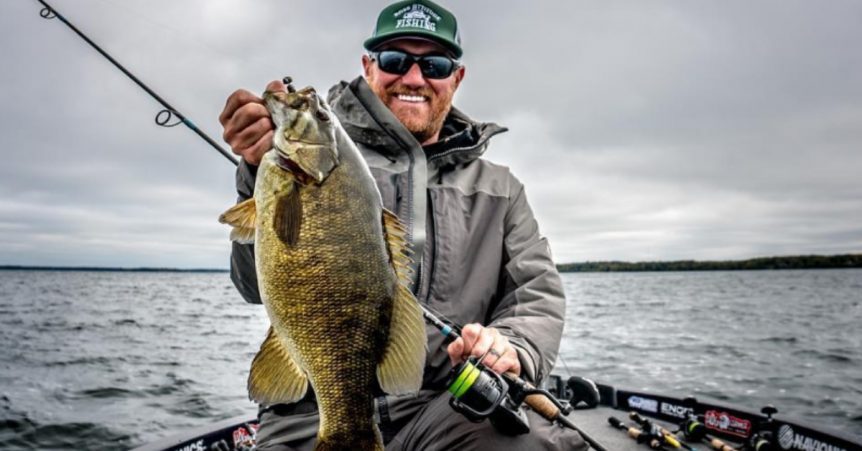How To Catch More Bass This Winter
During the wintertime, a key to finding big bass is deeper water with a quick access to the shallows.
Big bass seek deeper water for its warmer temperature zone, yet the fish like to have a spot with a short route to the shallows. This spot allows bass to move up quickly into the shallows on warmer days to feed, but the fish can quickly drop into the comfort of the deep warmer water when wintry weather turns nasty.
Defining Depths For Winter Bass Fishing

Defining deep water depends on where you fish throughout the country. A depth change of 2 feet or 20 feet could be a good wintertime bass hideout depending on the geographic location of the fishery.
The water is too cold at the average depth of the flat (about 10 feet deep), so the bass seek out the deepest water they can find for a comfort zone. If you find key vertical cover on parts of that ditch or where there is a lot of forage ganged up you can really find larger bass stacked up. On a natural shallow lake in Florida, the best winter big bass hideout could be a hole 6 feet deep at the edge of hydrilla. There might be only a 2-foot drop from the edge of the vegetation into the hole, but big bass seek refuge there because it is the deepest water in the area.
Best Places To Fish In The Winter

Favorite wintertime spots for big bass vary depending on the body of water. On shallow, lowland reservoirs look for cover such as old house foundations, stump rows and brush piles close to ditches or creek channels.
In the highland reservoirs try to get up in the rivers to fish the bends and turns that have a lot cleaner rock and a lot more vertical drops or bluff points.
The best big bass locations on reservoirs are holes. Big bass really group up in holes in the winter if you have a lake where the average depth is less than what is adequate for the fish to stay in a more stable environment.
An example of a big bass wintering hole is a ditch 20 to 30 feet deep in the middle of a long creek arm featuring an expansive flat.
Where To Look For Winter Bass

You can search for winter big bass hideouts with your electronics. Use the side scan and down imaging features to find the key piece on an area. With side imaging you get a better feel of where those fish are and why they are holding in one spot. For instance when there is an old creek channel that makes a hard bend and there is a big stump row on an outside turn, which is usually a deeper hole than the rest of the creek channel. Spots like that are usually big bass magnets.
Weather conditions can determine which wintertime big bass spots will produce best for you. Lots of sun shining on a winter hideout can be a bonus. You should take the sunshine into consideration but don’t weigh that as heavily as the other factors such as where the fish are coming from, the rocks, the vertical aspect of the spot or the forage. Good spots do become better with sun exposure but it is not a factor in making a nothing spot into a good spot.
How Does Weather Affect Winter Bass?

Wind plays more of a role in determining which winter big bass hideouts to target each day. On sunny days, key on spots receiving the most wind because it causes the warmer surface water to mix with the cooler lower layers of water to warm up the spot a few degrees. The most productive lures for working these spots are crankbaits, suspending jerkbaits and spinnerbaits that can be fished at mid-depth levels.
During cloudy days, concentrate on the deepest winter hangouts where big bass hug the bottom. The best lures for probing these deep spots are a jig or lipless ratting crankbait. So if you want to catch a wall hanger bass this winter, look for a deep hole with quick access to a shallow feeding area.


